|
International Dating
July was a hectic month on the London social scene, requiring my presence in the capital on numerous occasions to welcome important international visitors, though, quite honestly, Bruce and Madonna have been here so many times before, they are quite capable of looking after themselves. I therefore decided to restrict my efforts to the world of crime fiction and in particular to charming and interesting visitors from the southern hemisphere.
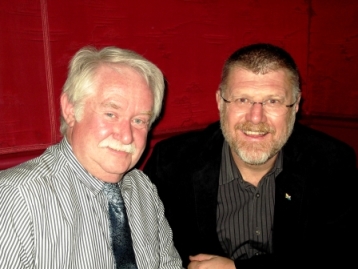
It was a delight to have dinner with master South African crime writer Deon Meyer, whose work I admire very much and whose last two books, 13 Hours and Trackers (now out in paperback), I rated as outstanding and jinxed by suggesting they were both worthy of Gold or Steel Daggers. Needless to say, the Curse of the Ripsters kicked in and neither book claimed a British award from the Ministry of Mystery Prizes.
I will therefore say absolutely nothing about Deon’s next book, 7 Days, to be published in September by Hodder, which I have had the privilege of reading already. My lips are sealed. I will give no hint as to the clever, supremely-paced plot about a sniper who has threatened to shoot a policeman every day until the murderer of a female corporate lawyer is brought to justice, and I certainly won’t mention that the book features Deon Meyer’s outstanding ensemble cast of policemen and women, or a heart-wrenching sub-plot involving alcoholism.
It was alson a pleasure to finally meet New Zealander Craig Sisteson, the Kiwi behing the influential website Crime Watch which has done so much (often, it seemed, single-handed) to promote crime fiction from, an in, New Zealand.
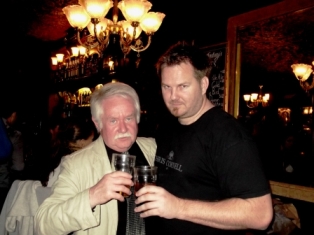
Although he had a busy personal schedule having travelled to the far side of the world, Craig managed to squeeze in a four-hour seminar with me where we discussed the major crime fiction issues of the day.
Tribute to an Unknown Friend
On August 8th the funeral will take place in Stragnäs in Sweden of Iwan Hedman Morelius (b.1931) whom I regarded as a friend even though I never met him.
Iwan, a long-serving officer in the Swedish military who had retired to Spain, was a dedicated fan and advocate of crime writing and a fantastic ambassador for British thriller writing in particular. In fact, that is how we “met” on the internet, for Iwan was a great supporter of the series of Top Notch Thrillers which I edit.
Iwan not only knew many of the books I was trying to bring back into print, but had been, forty or more years ago, personal friends with many of the authors. In fact, Iwan knew just about everybody in the world of crime and thriller writing in his day (and I do mean world) and allowed me on numerous occasions to raid his fantastic archive of photographs. Such as this one; which shows Iwan (right) in 1988 at the Los Angeles home of sci-fi master Ray Bradbury.
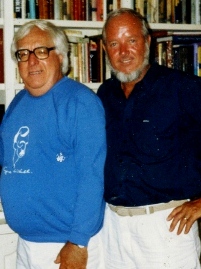
As a personal tribute to Iwan, I am offering a brace of the British thrillers which Iwan loved so much – Berkely Mather’s The Pass Beyond Kashmir and Duncan Kyle’s Terror’s Cradle, which actually has a character named after him – to whoever can answer the following question, based on one of Iwan’s favourite photographs, taken by him at a Crime Writers’ Association conference in Scarborough in the 1980s.
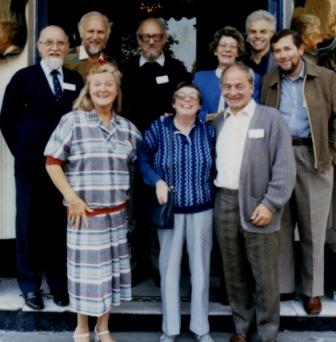
The two ladies in the front row are Iwan’s wife Margareta and Joan the widow of Desmond, Bagley. The other seven people are all British crime writers…but can you name them?
Answers should be emailed by 31st August to me via Shotscomp@yahoo.co.uk and your answer should start with the word MORELIUS.
Gaudy Nights
Later this month, the annual convention of the Dorothy L. Sayers Society takes place at Somerville College, Oxford to celebrate the centenary of Dorothy Sayers’ admission to the college in 1912, where she read modern languages and received a First in French – eventually – in 1920, when Oxford formally accepted that women could qualify for a degree.
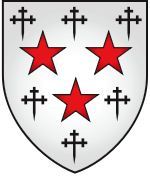
Somerville was undoubtedly the inspiration for ‘Shrewsbury College’ in her 1935 novel Gaudy Night, but the celebrations of the DLS Society will be rather sombre as they will include a Memorial Service (in Somerville Chapel) for Christopher Dean, the Society’s highly-regarded long-serving Chairman who sadly died earlier this year.
The Story Now Arriving…
Julia Crouch has claimed a unique distinction this year by being appointed the only writer-in-residence on a train, as part of the Theakston’s Crime Writing Festival in Harrogate. The first fruit of that particular literary venture is a short story – Strangeness on a Train – which was written during her return journey from her home in Brighton to Harrogate on the East Coast Rail service.

The story has subsequently been published by Headline and ‘samplers’ distributed by East Coast Rail to passengers travelling the same route.
Only the cynical would speculate that had her residency been with another well known rail service covering the western half of the country, then Julia might have had time to write a complete novel.
First out of the gate
The Autumn publishing season is traditionally marked by some of the biggest names in the business and it is fitting that a new Dick Francis novel should be the first out of the starting gate.
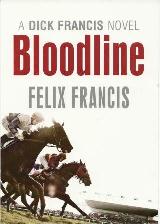
Bloodline, published by Michael Joseph on 13th September, is written by Felix Francis, who co-operated with his late father Dick on several thrillers before having to climb into the saddle alone and continue ‘the family business’ as he puts it. We should be thankful that he has, for the Autumn would be a gloomier season without one.
Being quite graphic
I did warn those awfully nice – and very brave – publishers at Titan Books that I was not a great devotee of the ‘Graphic Novel’ as I come from a generation of males where publications with pictures in were first ‘comics’, then things like War Picture Library which were known as ‘magazines’ or ‘shilling shockers’, finally graduating to Penthouse. Since the age of 12, however, I cannot recall reading any of them, not that I would admit it if I had.
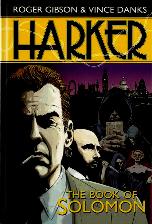
Nevertheless, the good folk at Titan insisted on sending me a copy of Harker: The Book of Solomon by Roger Gibson and Vince Danks, which is aptly described as an homage to classic police detective TV shows. Certainly many of the references are easy enough to spot (though I’m not sure if the references to Jonathan Latimer’s Solomon’s Vineyard and possibly Hammett’s Dain Curse were intentional). There’s a police detective who is quirky, smokes constantly, wears plimsolls (trainers?) and drives an ancient ‘classic car’ and lots and lots of movie references, including Silence of the Lambs and The Ninth Gate, with a name check for John Woo along the way.
A fair amount of the action takes place in the British Museum, though as a regular visitor (many call it my London pied-à-terre) I must point out pedantically that the Reading Room was actual closed during the Hadrian Exhibition. Still, it was very nice to see The Museum Tavern across the road featured on several pages, though I cannot recall ever seeing it that empty before. It seemed to suggest that one could almost get served quite quickly…
But I am waffling because I really cannot think of anything constructive to say as this is a crime fiction format which is totally alien to me. Have Titan done a good production job? I would say so, though I am no judge. Would I pay £14.99 for it? No, I wouldn’t, but then I know I am far removed from the target audience.ammett’s
The Eleventh Little….
I have recently acquired a 33-year-old copy of a French detective story, The Eleventh Little Nigger of which I was previously unaware. Written by the theatrical team of Yves Jacquemard and Jean-Michel Sénécal, the book is clearly dedicated to the work of Agatha Christie and is cheekily set in a theatre where the entire cast of a new production of the play Ten Little Niggers are found dead in their dressing rooms. Just in case anyone misses the connection, the investigating Sûreté detective is called Hector Parescot (familiar initials, anyone?).
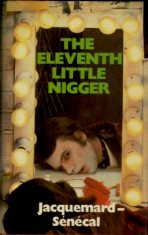 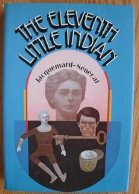
For reasons of political correctness, the book was retitled The Eleventh Little Indian in America, though I would have thought that a bit of a hostage to fortune as well. Agatha Christie’s classic Ten Little Niggers also went through that change some years back (more recently than you might think) and the title was changed yet again to And Then There Were None.
Now whatever the sensitivities surrounding the “N” word, authors Jacquemard and Sénécal did not foresee a problem in 1978 when they wrote Le onziéme petit nègre nor did Collins when they published the English translation in 1979. Neither, of course, did Agatha Christie when she wrote the original in 1939. Nor did publishers Pan when they produced this version in 1947.
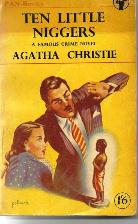
Nor, it seems, was Nobel Prize (for Literature) winner Ernest Hemingway especially concerned about the word in 1937 when he wrote To Have and To Have Not, as he uses the “N” word 23 times in the first chapter and then goes on to use, just as frequently, a rather derogatory term for Chinese in Chapter 2!
I admit that my edition of the Hemingway book is over fifty years old but I suspect it is still in print and, I suspect, still just as politically incorrect, and it should be left that way as a product of its time whilst we should give thanks we don’t write like that anymore.
Arizona Descriptor
Reporting on the recent annual conference organised by the famous Poisoned Pen Bookstore in Arizona, blogger and crime fan Lesa Holstine provides one of the most succinct, if slightly surreal, descriptions of a new mystery which I will seek out immediately:
Howard Anderson, a D.A. in New Mexico, is a debut author. His novel, Albert of Adelaide, is about a platypus. The book is quite popular in Australia.

I hear that the book is due to be published here by Serpent’s Tail and its listing on Amazon provides a few more details. It is, it seems: “A story of friendship, loyalty and heroism. And marsupials.”
To Die For
The cover blurb of Books To Die For declares that within its 734 pages, “The world’s greatest mystery writers” (over 100 of them) select and comment on “the world’s greatest mystery novels”, which are both bold claims.
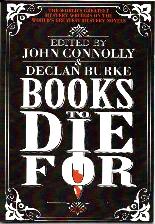
Naturally, I began to search for the dozens of Scandinavian authors and Scandinavian novels which must be there, as I firmly believe everything publishers tell me these days about where the greatest mystery writers come from and where the greatest mystery novels are set.
To my surprise I found (unless my arithmetic is as wayward as it always is) only four Scandinavian crime writers as contributors (about 3%), none of whom nominated a Scandinavian mystery. As far as I could see, only three Scandinavian mysteries were nominated, including Roseanna by Sjöwall and Wahlöo and Miss Smilla’s Feeling For Snow, and even I cannot argue with those.
However, once that particular elephant had been taken from the room and shot, I was able to concentrate on the bulk of the contributions, taking care to follow the instructions of editors John Connolly and Declan Burke in their Introduction: ..any anthology such as this is inevitably accompanied by howls of anguish from those whose first instinct is always to seek out what is absent rather than applaud what is present.
So, let’s get the howls of anguish out of the way; though in truth they are squeaks rather than howls.
Books To Die For is not a history of crime fiction and does not pretend to be, although the titles it features span the history of the genre from 1841 to the present (or at least 2008). I must admit to being rather surprised that more titles deemed worthy of being “the world’s greatest mysteries” have been published in the eighteen years 1990-2008 than were published in the 109 years between 1841 and 1950; but that probably says more about the reading habits and memories of the contributors than the genre itself.
To be fair (if I must), the editors do say: It is hard enough to keep up with authors who are alive, but those who are deceased are at risk of being forgotten entirely. Therein they have hit upon the universal truth that all writers die twice: once when they stop breathing and again when their books are forgotten. Only in one instance does the anthology seem to lobby (quite rightly) for a writer at risk of being forgotten and that is for Ross Macdonald, one of the few mystery writers to have two titles listed, one proposed by Linwood Barclay and one by editor John Connolly, who is known to be among Macdonald’s noblest champions.
I was surprised to see that some writers clearly have been forgotten by ‘the world’s greatest mystery writers’ – Ian Fleming, Len Deighton, David Goodis and Cornell Woolrich to name but four – and I was mildly shocked to find no mention of Francis Iles’ Malice Aforethought, William McIlvanney’s Laidlaw or Horace McCoy’s They Shoot Horses, Don’t They? all of which I would have shoe-horned in and to hell with the word count.
Of course, the choices made here are personal and more than half the fun of an anthology such as this is arguing with (or howling in anguish at) particular choices. I wouldn’t have picked that Agatha Christie (nor would Raymond Chandler!), or that John D. MacDonald or that Charles Willeford, or that Elmore Leonard and certainly not that James Lee Burke, though I am delighted all those authors are represented and these are minor niggles over favourite books which are best resolved through heated discussions in Four Ale Bars.
The great benefit of such an anthology – which genuinely tries to take an international view even if something like 60% of the books recommended turn out to be American – is that it should throw up some pleasant surprises and introduce the mystery reader to some new names to look out for.
Among the many pleasant nuggets among this collection of essays: Ruth Dudley Edwards on Edmund Crispin’s The Moving Toyshop; Margaret Maron on Josephine Tey’s Brat Farrar; Charlaine Harris on Geoffrey Household’s Rogue Male; Elmore Leonard on George V. Higgins’ The Friends of Eddie Coyle; James Hall on Elmore Leonard’s LaBrava; Natasha Cooper on V.I. Warshawski’s Toxic Shock; and Barbara Nadel on Peter Ackroyd’s wonderfully bizarre Dan Leno and the Limehouse Golem.
That extra incentive of finding an author or a book you didn’t know and being tempted into trying it, is, of course, the main joy of such a compendium. No one can have read all the books mentioned – I myself can claim to have read no more than 85% of them – and “something new” is always (or should be) the Holy Grail of all mystery readers. For my part, my thanks go out to Declan Burke, Allan Guthrie and Bill Pronzini for pointing me, respectively, towards work by Liam O’Flaherty, Erskine Caldwell and Elliott Chaze with which I was unfamiliar.
And of course thanks must go to John Connolly and Declan Burke for editing Books To Die For (to be published at the end of this month by Hodder & Stoughton), which must have been a job only slightly less taxing than herding cats.
|
|
Sockpuppetry
I freely admit to not knowing that the term “Sock Puppet” had any meaning other than on Sesame Street; I am also oblivious to whatever “Twitter” is, though I understand it is not something birdwatchers do; and, in all honesty, I am on shaky grounds when it comes to understanding what “E-books” are – for years I was under the impression that this was the traditional cry of joy one gave when entering a library in West Yorkshire.

However, something of a storm (if not in a teacup then in a half-pint of Old Peculier) has blown up involving all these technological terms following the Theakston’s Crime Writing Festival in the sedate northern town of Harrogate last month.
As, for legal reasons I was not there, I am supremely placed to give a definitive account of what has become known as “Tossergate” by listening to gossip, reading third-hand reports and, in the best tradition of crime fiction, making it all up.
Setting up, or priming, a panel at a Crime Festival to be controversial is not new. Those of us with better memories will remember incidents involving P.D. James and Chaz Brenchley, Mark Timlin and Minette Walters, Reginald Hill and John Banville. Often it generates publicity; not always good publicity.
This year the hot topic seems to have been e-books and the self-publishing of them at low prices, if not completely free. Taking the lead (or pushed to the front, I am not sure which) on the subject was Stephen Leather, the author of over 30 conventionally-published novels since 1987 but also, it appears, a keen advocate of publishing his other work himself as e-books which, I believe, can sell for as little as 72p or be entirely free.
Mr Leather gave, by all accounts, a stalwart defence of his position to a far from receptive audience though I fear he has done himself no favours by subsequently describing that audience as “predominantly female and elderly.” (He may not have meant that disparagingly; after all, most of my mistresses are predominantly female and elderly….)
Things really hotted up, however, when Mr Leather admitted (allegedly) to employing “Sock Puppets” – or false identities – to praise and promote e-books, presumably his own, on the jolly old interweb. It was at this point that an over-excited member of that audience (surely not one of the ladies of a certain age) exclaimed loudly: “Tosser!” Hence, the event has consequently been consigned to the recycling bin of history as “Tossergate”.
I was informed that the “Twittersphere” post-Harrogate was positively buzzing with the subject and I was further assured that “even an eight-year-old could use Twitter”. Intrigued to see how the debate was progressing, I recruited one of the many eight-year-old feral urchins haunting the grounds of Ripster Hall and ordered him to show me “Twitter”, which he did in return for a double ration of gruel.
I must say I was bemused and rather saddened that such sophisticated technology (for I am assured it is) should be home to such trivial bickerings and my first visit to the Twittersphere will be my last.
I do have to say, though, that I think Mr Leather gotin the last word. When serial-blogger and some-time spy fiction writer Jeremy Duns tweeted (if that’s the right word) that he thought Mr Leather’s admission of sockpuppetry was “pathetic”, Mr Leather responded immediately with the tweet: “Who are you and why are you talking to me?”
It is a question I have found myself posing quite often thesedays, but that has more to do with great age, infirmity and alcohol than modern forms of publishing, tweeting or even sock puppets.
Crime in Foreign Climes
I have not read many crime novels where the main sleuth hero plies his trade (in this case as a lawyer), on Gibraltar. In fact I think Thomas Mogford’s Shadow of the Rock, out now from Bloomsbury, is probably the first one, and very good it is too.
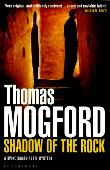
It almost certainly won’t be the last as the hero in question, Spike Sanguinetti, who operates more in private eye mode rather than as a stuffy courtroom barrister, is already lined up for a sequel. It may seem that Gibraltar, with a population the size of that of Spalding in Lincolnshire, might be too limitinga canvas for an exciting plot, but Mogford cleverly switches most of the action to the badlands of Tangiers just across the water, and does so with great skill.
The second outing for another fictional legal eagle/investigator, Polish prosecutor Teodor Szacki, A Grain of Truth by Zygmunt Miloszewski is already here, or will be early next month, published by the adventurous Bitter Lemon Press.
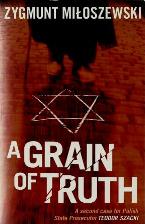
Forsaking the Warsaw setting of his first appearance in the much-praised Entanglement, Prosecutor Szacki moves to a more rural small town setting to start a new life but fairly quickly finds himself involved in a murder case which bears all the hallmarks of Jewish ritual slaughter and which brings back unpleasant memories of Polish-Jewish relations from the past.
In America, one of the truly great noir stylists Andrew Vachss may have retired his series anti-hero Burke (after a long and violent career), but the author himself certainly isn’t easing up.

Vachss has two books out in America from the Vintage/Black Lizard imprint this year. Blackjack, which features Cross, a character from Vachss’ short stories in his first novel, is out now and in November, A Bomb Built in Hell appears after, many would say, a hell of a wait.

A Bomb Built in Hell was originally written in the early 1970s, before Andrew Vachss’ ‘breakthrough’ book Flood but was rejected at the time as being too hard-boiled, too extreme and too spare and violent. Some scenes and themes from Bomb found their way into Andrew’s Burke series, but this will be the first professionally edited, complete version of Vachss’ ‘prentice work’.
What is both fascinating and sad is that many of the violent events in the book which were rejected by publishers as too far-fetched back in 1972, have become all too familiar.
Kindler’s List
I was intrigued to be invited to the launch party of a book I was told was “The Runaway Bestseller” even though it was yet to be published as a paperback original by HarperCollins.
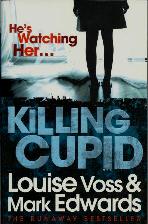
It turns out, of course, that Killing Cupid by Louise Voss and Mark Edwards was a “runaway bestseller” when self-published as an e-book (should that be “runaway downloader”?) which is why I was totally unaware of this “gripping stalker thriller with a unique twist for fans of Nicci French, Ruth Rendell and James Patterson” (I am quoting here) until now.
I believe the book was first drafted ten years ago but only after rewriting and electronic self-publication was it picked up by HarperCollins and now has the advantage of already having lots of positive reviews on Amazon before it actually appears in a bookshop. Among the reviews, one rather gives the plot away by saying that the twist is that the “Storkee” (sic) begins to stalk the “Storker”(sic) and one particularly glowing one says that the reader would gladly “have paid more than 99p for it”.
Fans looking for a similar bargain with the paperback version will not be disappointed. Voss and Edwards’ second book, Catch Your Death, is not only written, but published simultaneously with their first and the deal seems to be what is known in the supermarkets as a ‘Bogof’ – buy one, get one free. Consequently, the avid fan can get two novels for £6.99; but that’s not all, there’s more!
An additional promotion offers “As good as Nicci French or your money back”, so the more cynical reader could end up enjoying two books at no cost to themselves, which makes the original 99p e-book price look rather high.
Killing Cupid is described by the authors as, at heart, a “love story”. I am aware that there is another “love story” which has also done rather well as a Kindle e-book and is now doing well as a printed book, called And With Him Fled the Shades of Night – or something like that, though I always thought that was a quote from Milton. I must have been told the proper title at least 50 times, but for some reason it just won’t stick and remains a grey area in my befuddled brain. For a once proud bookman like myself that is a terrible admission of guilt and something I should probably be punished for; punished quite severely.
Shades, or whatever it is called, does come with something of a raunchy reputation, but I have consulted the Ripster family solicitor, Sir Bufton Tufton, and he tells me he is happy for his servants to read it – albeit discreetly on their Kindling machines – and so I will be too.
Elementary and, it seems, Fascinating
For once (and I never thought I would peck out these words on a keyboard), I agree totally with Gyles Brandreth.
In his introduction he describes The Sherlock Holmes Miscellany, just out from The History Press, as “the ultimate vade mecum for Holmesians everywhere…a labour of love and a model of scholarship” and I think he is absolutely right on all three counts.
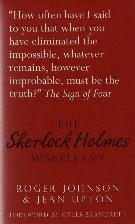
The compilers of the Miscellany, Roger Johnson and Jean Upton are both well-known scholars and aficionados of everything to do with The Great Detective, as well as being members of the Sherlock Holmes Society, the Baker Street Irregulars and the Adventuresses of Sherlock Holmes. I am therefore quite willing to believe they know exactly what they are talking about and to admit they know far more than I ever did about Sherlock Holmes – up until I read their marvellous book, that is. Now, I am a positive mine of fascinating facts.
Did you know, for instance, that when the original theatrical play Sherlock Holmes from 1899 (written by Conan Doyle and actor William Gillette) was revived in 1974 and moved to Broadway, one of the actors to play Holmes on stage was Leonard Nimoy? (The Miscellany does not record whether Nimoy ever referred to Dr Watson as “Bones”.)
I was also unaware that there had been at least two attempts to do the Holmes stories as a musical, one in the 1980s, predictably called Sherlock Holmes The Musical with Ron Moody as Holmes, and an earlier American version entitled Baker Street in the 1960s. This one had nothing to do with Gerry Rafferty sadly, but was notable for starring Peter Sallis as Dr Watson, a role he has in recent years tailored to fit his new persona as ‘Wallace’ to that brilliant detective ‘Grommit’.
There is also a fascinating (as Leonard Nimoy might say) discourse on where exactly 221B Baker Street might be, or have been. In my more cavalier younger days, when I worked just off Baker Street, I would cheerfully tell confused tourists that the site of 221B was not the Abbey National offices (which they knew already) but most likely it was the modern pharmacy run by Mr Patel about half-way down on the left towards Portman Square. Of course I had no idea what I was talking about and no idea that so many dedicated Holmesian scholars had researched the matter and come up with so many far more credible locations.
Thanks to the Miscellany, I know that now and will no longer pass myself off as a local guide to tourists. I will miss the tips, though, not to mention the back-handers from Mr Patel.
Competition Winner
The winner of the Denise Danks/Ostara Crime competition in the July column was Simon Harrington, of Bridgnorth in Shropshire.
Ragtime Spy
It is well-known that I am rarely swayed by small (non-alcoholic) promotional material from publishers, but when I received a beautiful reproduction postcard ripe with images form the Great War, I have to admit I was intrigued.

It turns out that this was a tempting foretaste of the new novel by Andrew Williams and whilst small and (do I have to say it again?) non-alcoholic, it was more than enough of an incentive to try the book; not that an incentive was really needed.
Anyone who has read The Interrogator (World War II and the Battle of the Atlantic) or To Kill A Tsar (19th century Russia) knows that Andrew Williams can handle historical material and weave a good intelligent thriller plot into it.
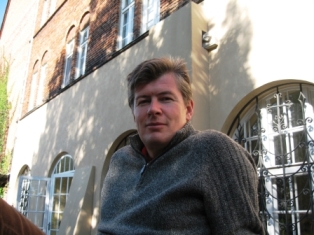
His third novel, The Poison Tide, published by John Murray this month, is his most ambitious so far: an epic saga of spies, unthinkable secret weapons and national and international politics. The back drop is nothing less than the First World War, the book spanning almost all of it, but the action centres not on the bloody, muddy trenches of the Western Front, but on Berlin, on Ireland and, primarily, on ‘neutral’ America where the newly minted music of ragtime provides the soundtrack to a deadly game of wits between the infant secret services of England and Germany.
At the hub of the plot of The Poison Tide is the Irish liberationist (or traitor depending on your point of view) Sir Roger Casement, who is in Germany in 1915 negotiating for support, supplies and guns in his mission to throw the British out of Ireland on the old ‘my enemy’s enemy is my friend’ principle. A British agent, Sebastian Wolff (once an officer and a gentleman but rapidly learning the ruthless trade of spying) is sent to Berlin, posing as an anti-British Boer, to shadow Casement on the orders of ‘C’ the head of the fledgling British Secret Service.
Wolff not only succeeds in gaining the trust of Casement, but manages to impress the Kaiser’s secret service along the way, and all this is conjured in confident scenes of First World War Germany the like of which I haven’t read since Len Deighton’s immaculate novel Winter, twenty-five years ago.
The plot takes Wolff to America – then desperately trying to stay away from the European killing fields – where he finds himself snared in web of sabotage, espionage and rebellion, involving Irish nationalists, German sympathisers, rival intelligence agencies and an entirely new form of warfare.
Despite its length, The Poison Tide never flags, partly because the writing is so good and partly because the background research is both exhaustive and fascinating, but mostly because all the characters – from upstanding British hero to the cold German scientist ‘baddie’ – are real, three-dimensional characters with strengths and weaknesses which makes them human, despite the often inhuman situations they are placed in.
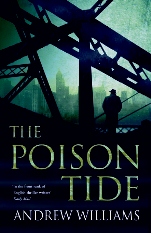
This is a very satisfying thriller on many levels. Above all, it’s an intelligent thriller: brilliantly researched, superbly crafted and, above all, well written.
But then, any thriller which can use the phrase ‘pushed it from the Tarpeian for sexual impropriety’ gets my vote and wholehearted support, as does the editor who let it through.
Jolly Good Show
The wonderful spectacle of the 2012 Olympics Opening Ceremony directed by Sir (pending) Danny Boyle was an exhilarating experience and reminded me of the time, over fifteen years ago, when I suggested to Seb Coe (then a lowly M.P.) that he consider trying to bring the Olympics to London.

He was sceptical at first and asked if I had any ideas for a site, saying that all that was needed was a piece of waste ground on which a few tents could be erected. I immediately suggested a scrap-yard I knew which lay alongside the River Lea near Stratford in which I had set the thrilling climax to my 1994 novel Angel City.
To be honest, I didn’t think Lord Coe had taken me seriously and so I did nothing about purchasing the freehold to several acres of that polluted junk-yard, thus missing the opportunity of a lifetime. Still, it’s not the winning, is it? It’s the claiming to have played one’s part.
Pip! Pip!
The Ripster
|
|